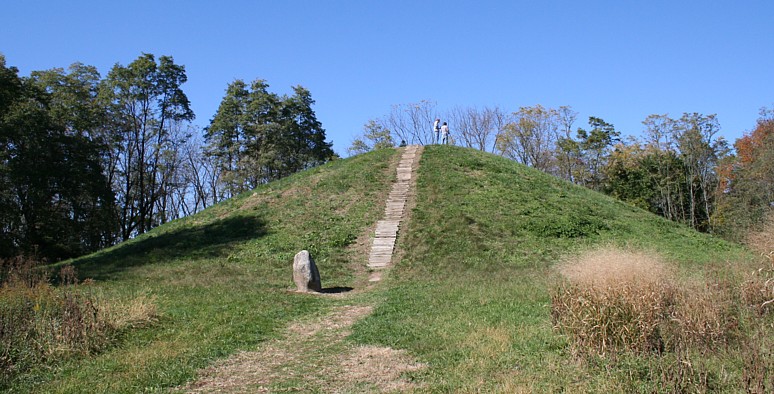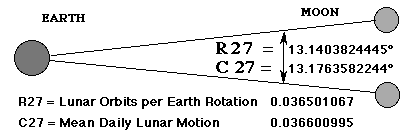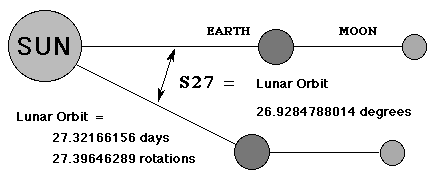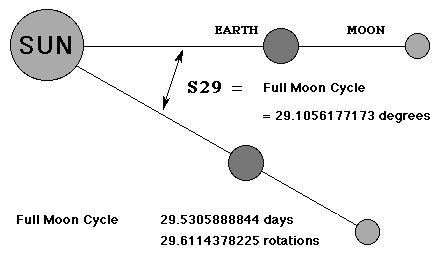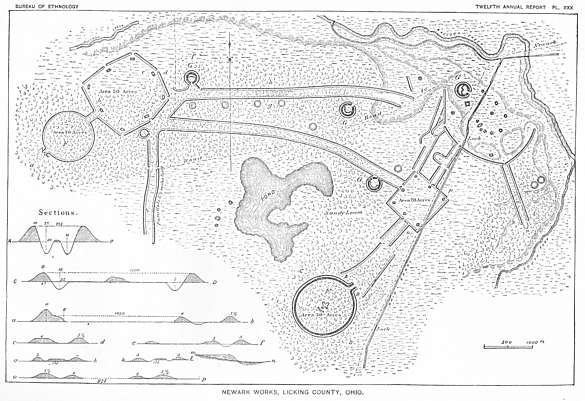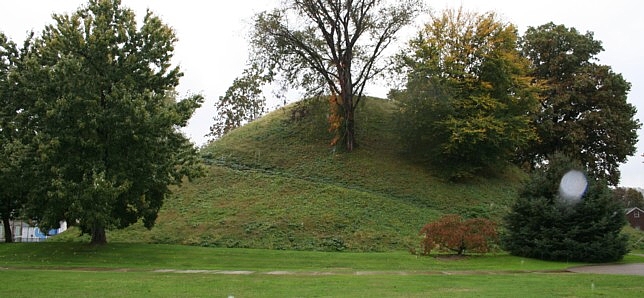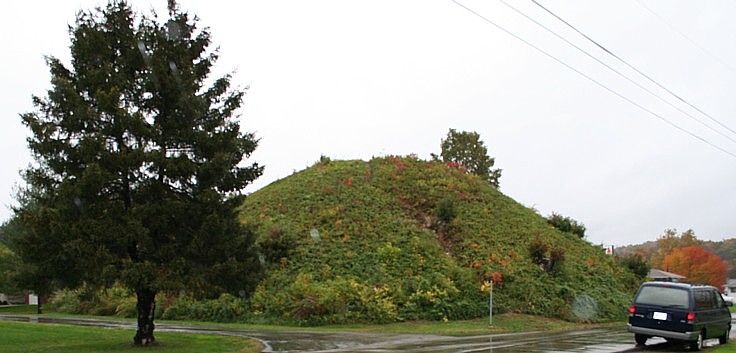|
Fundamental Astronomy There are two basic astronomical references for time. One is the relationships of motions to fixed celestial reference. Three motions, 1.) earth rotation on its axis, 2.) earth orbit of the sun, and 3.) lunar orbit of the earth are natural durations of motion referenced to fixed space. Our other basic point of reference is the sun, the one star that apparently—due to our perspective from an orbiting earth—moves in relation to the fixed celestial background. The day and year are referenced to the sun. Because the earth is orbiting the sun at the same time and in the same direction as it rotates on its axis, there is one less day per solar orbit than there are rotations. I abbreviate rotations per orbit as RO and the value for the year 2000 as RO2. RO equals 366.25636. There is one less day per orbit than rotations, so days per orbit for the year 2000 (DO2) equals 365.25636. Rotation per day (RD) equals 0.99727, that is 1 - 1/RO = RD. (For values with greater decimal accuracy refer to the Astronomic Constants Page. You can download Epoch Calc, my Excel spreadsheet to calculates these values for other temporal epochs. You only need to enter the date.) One earth orbit around the sun is a circumferential motion referenced to fixed celestial space. In contrast, the year is a more complex formulation referenced to the sun. Years, products of two motions, solar orbit and the earth's precession cycle (PR), begin and end at unique points in space. The seasons and the year are the result of the rotating inclination of the earth's spin axis in combination with solar orbit motion. The earth's axis inclines the poles away from the sun in winter and towards the sun in summer. Precession is the motion of the earth's axis of rotation gradually changing direction in reference to fixed celestial reference. The current rate of precession is one retrograde rotation per approximately 25,780 orbits. Because the precession motion is retrograde, the axis realigns inclined towards the sun slightly before completion of an orbit, and therefore one year is shorter than one orbit by the inverse of the orbits per precession cycle, or about 1/25,780 (1/OP) in 2000. In one 360° precession of the axis in fixed space there is one more year than orbits. The formula for years per orbit (YO) is one orbit minus the inverse of the precession cycle (YO = 1 - 1/OP). Days per year (DY), formulated in reference to fixed celestial space, is DY = (RO - 1/RO) x (1 - 1/OP). As can be seen in these equations, the day and year, as time modules, are more complex astronomical formulations derived from the fundamental motions of orbits, rotations, and precession, and therefore less practical to the astronomer, especially the pre-computer age astronomer.
Astronomy and Astronomical Modules The Popol Vuh account says nothing of the modules used when they "measured the earth and the sky." However, when considering prehistoric cultures, the present day investigator is not empty-handed. The sky has its own subdivisions, produced by the fundamental cosmic motions, earth's axial rotation, earth's orbit of the sun, and lunar orbit of the earth. Accurate measure of these motions produces basic equations or ratios (fixed heliocentric celestial reference, year 2,000.) of 0.0365010666 lunar orbits and 0.002730328 solar orbits per axial rotation (inversely 13.368746 and 366.25636, with 27.396463 rotations per lunar orbit). To simplify calculations I created a representational computer code that is HP48 palmtop compatible. (Thank you, Hewlett Packard and John Beaton, for loaning equipment.) All the code terms are presented in the Astronomic and Cosmographic indices and are available in Excel, in ArchaeoGeodesy v2006.10.12 or later. Introducing more abbreviations now will facilitate this discussion, particularly so given English still lacks names for all of them. Lunar motion can be referenced to the day or to rotation. I coined the term "lunos" for lunar nodal shift. My computer code term lunos per day (mean daily lunar motion) is "C27," representational of circumference divided by the 27.32166 days per lunar orbit. The code term "R27" represents lunos per rotation. C27 equals 13.176358° compared to 13.140382° for R27, a difference of 0.00010 lunar orbits (0.0035976°). In geocentric arc distance measured on the earth's surface the difference is about 4.0 km or very near to 1/10,000th of circumference (0.00009993 CIR). Lunos per day is 0.036600995 circumference, while lunos per rotation is 0.0365010666. I named the amount of angular solar orbit per day "sonos," for solar nodal shift. Sonos (SO) is 0.98560912° at year 2000 values. Multiples of sonos include the angular amount of solar orbit per lunar orbit, termed "S27," an abbreviation for sonos times 27.32166 days per lunar orbit. Solar orbit per full moon period is termed "S29," representing the sonos per 29.53059 day synodal month. These two modules are illustrated below. S22 represents sonos during the 27.21222 day lunar nodal period, the eclipse cycle period of lunar orbit intersecting the ecliptic. (For a reference with precise values of the modules used herein see the Modules sections of the Cosmographic Constants Index.) The R27 module (mean lunar orbital motion per earth rotation, 0.036501 CIR) is the fundamental relationship, or unit of measure/count, that underlies a lunar ephemeris/calendar. The S29 and S22 modules intercalate as the eclipse cycle. Without mechanical clocks, eclipses are the easiest natural means of accurately observing astronomical time. Lunar eclipses are a unique opportunity for every longitude to observe a celestial event the timings of which can be compared to locally-referenced time. If the ancient inhabitants of Eastern North America, and/or elsewhere, placed their monuments at known geodetic positions—at specific latitudes and longitudes—with astronomical determinations of longitude, they would have done so utilizing a lunar ephemeris or other lunar means of determining time and longitude. You may be asking "Why this digression into astronomy, new terminology, and new modules?" Astronomical determination of longitude from fixed positions on land would require, before mechanical chronometers, lunar time-keeping. If monuments evidence the capability of determining longitude, their builders were aware of the fundamental astronomic modules of lunar motion and these units of measure, or some derivation, should be in evidence if they were employed in determination of longitude. Long periods of observation accumulates multiples of these units in the observations. Calendar counts are, inherently, long periods of observation, and sidereal counts present the 0.0365010666 lunar orbits per rotation and 366.25636 rotations per solar orbit ratios.
Astronomic Modules and Site Relationships The preceding discussion of fundamental astronomy and astronomically determined modules of measure paves the way to discusss site relationships that express the modules. The 0.036501 circumference (R27) module is fundamental to a lunar sidereal ephemeris. Not surprisingly, the R27 module recurs in the site relationships of some of the most prominent ancient monuments in the Americas, the British Isles, and elsewhere. At Fort Center, Florida, an about 1188 foot in diameter prehistoric earthen circle was built, near the same size as the 1189 foot Newark Circle. Outside of the Middle Ohio River Valley, the large Fort Center Circle is unique in North America. Large earthen circles are also known in Northeastern Europe and smaller earthen circles are not uncommon. The arc distance between Fort Center and Newark expresses the fundamental equation of lunar orbits per earth rotation (R27, 0.036501 CIR). The center-on-center arc distance between the Fort Center Circle and the Newark Octagon's Observatory Circle equals 13.14059° or 1.000016 R27. This is an excess of only 23 m in relation to a center-on-center line over 900 miles long between two earthen circles up to 360 m in diameter. Grave Creek Mound is the largest mound along the Ohio River, the highest Adena mound, and one of the largest conical mounds in the Americas. It is located upriver from Marietta Earthworks. The arc distance from Grave Creek Mound to Newark Observatory Mound is 1.3136° (0.09997 R27, 0.003649 CIR). Other Hopewell site-to-site arc distance relationships express R27 fractions.
The relationships of some of the most significant archaeological monuments in North America also evidence the same modules. One R27 is the longitude difference between the Pyramid of the Sun, the second largest pyramid in the Americas, and the largest platform mound in the American Southwest, Pueblo Grande, in Phoenix, Arizona. The longitude difference between Newark and Teotihuacan is 1.25 R27. These relationships may have utility in the practice of naked-eye astronomy, lunar observations, or calendar keeping from these sites. Given that the distance east from Pueblo Grande to the Pyramid of the Sun is equal to the lunar motion per rotation, the moon would be at the same celestial longitude over Teotihuacan on any given night as it was exactly one rotation earlier as seen from the Pueblo Grande meridian. The relationships may have applied to comparison of observations from the sites and/or timing observations. Relationships between major monuments on opposite sides of the Atlantic express the same modules. The arc distance from Newark to Stonehenge equals 1.875 S29 and to the Newgrange complex 3.875 C27. From Marietta to the Newgrange complex the arc is 1.75 S29 and 3.875 R27. The arc from Newark Circle to Thornborough equals 2.0 S22. Given the sizes of these complexes, the margins of error are nil. If these examples of site relationships were purposeful (as opposed to coincidental), obviously the First Americans were capable of exact determination of longitude. If the distances from Avebury to the Newgrange and Tara complexes, one one-hundredth of circumference, and from Newgrange to the Great Pyramid, one-tenth of circumference, or to Karnak, were also intentional, then the same capability can be attributed to the Neolithic culture of the British Isles and to the Nile culture. If the relationships of sites on opposite sides of the Atlantic are purposeful, they pose questions difficult to answer, at least in terms of known cultural relationships. The site relationships nonetheless exist. Contravening any coincidence argument, especially given such is also the methodology with modern geodetic benchmarks, is the fact that the relationships exist between significant sites, rather than random sites.
The next part covers methods, then returns to the Neolithic sites of the British Isles. HOME -- GO TO PART
FOUR -- ONE -- TWO -- ARCHAEOGEODESY PAGE |
